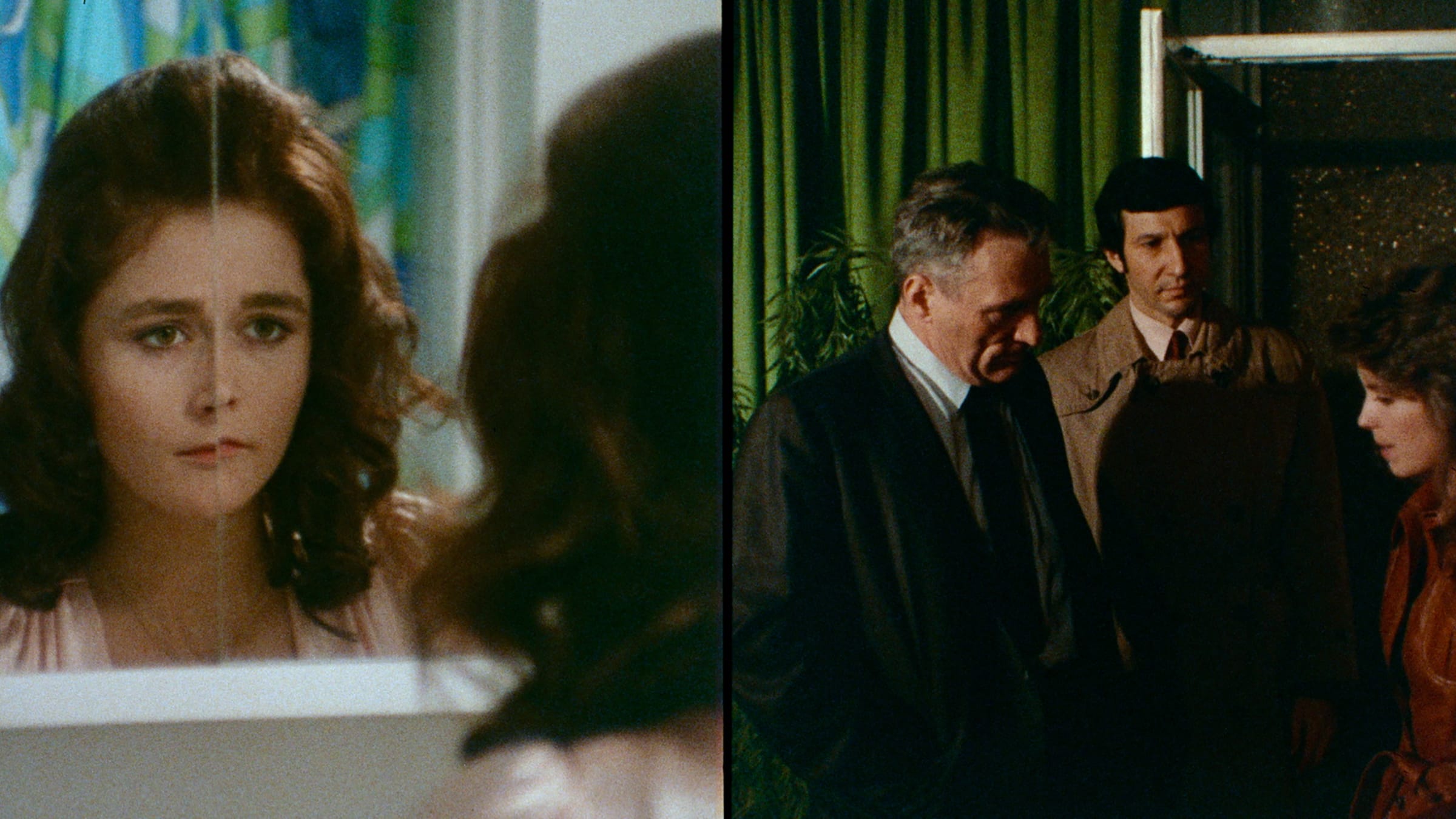Sisters

The most important of Brian De Palma’s earlier features, Greetings (1968) and Hi, Mom! (1970), resist the commodification of entertainment while charting the development of Jon Rubin (Robert De Niro) from voyeur to filmmaker to urban guerilla. If pictures like Mission: Impossible (1996) suggest that De Palma is now content to make entertainment products that begin and end in capitalism, the themes of voyeurism and its relation to filmmaking have remained central to his work. At one point in Greetings, “peep artist” Jon gets the idea for a show, The Peepers and the Peeped, about people seen through their windows in intimate moments. Trying to shoot an episode with a window mock-up, Jon directs a woman to undress—then walks in front of the camera and over to the bed, hoping she is in the mood for sex. “What are you doing coming in through my window?” she says, a question that is asked, one way or another, in most of De Palma’s films.
Sisters begins with an episode of a television show, Peeping Toms, that was inspired by Candid Camera but could have been dreamed up by Jon Rubin. The guest, who is in a locker room where an apparently blind woman has come in to undress and who doesn’t know that he is the one being watched by cameras, decides whether he will peep or leave. The show’s name alludes to Michael Powell’s Peeping Tom (1960), and begins a procession of references and homages that will march through the rest of De Palma’s movies. Sisters also makes intelligent reference to Rope (1948), Rear Window (1954), Psycho (1960), and even The Cabinet of Dr. Caligari (1920). The film ends with a shot of a detective looking through binoculars at what might be called the scene of the crime, intently but fruitlessly watching a couch that no one will ever incriminate themselves with by picking up. From start to finish, Sisters is charged with scenes of looking—from seeing a murder through a window to seeing another person’s memories in one’s own mind. The camera is more probing and attentive in Sisters than in De Palma’s earlier work; it isolates crucial objects better, roves more smoothly over the mysterious terrain it investigates. This is a sign not only of the increased formal control of this picture—a goal De Palma set himself here, using Hitchcock as his model—but also of the filmmaker’s having taken on the role of looker.
In Sisters, Danielle (Margot Kidder) and Dominique are Siamese twins, separated less than a year before the picture begins. Unable to function without the sister who died on the operating table, Danielle has come down with Instant Multiple-Personality Disorder. She keeps her sister with her, inside, while outside she bears the hip scar that is the sign of their separation; she is two-in-one. This key theme, that what appears to be whole may be divided and what appears to be two may be one, is central to virtually all of the major works that followed. Two women add to one in Body Double (1984) and—thanks to film, which is never innocent, and its ability to synchronize one person’s voice with another’s mouth—in Blow Out (1981). In Obsession (1976), a lookalike mother and daughter threaten to fuse. At the climax of The Fury (1978), a son is surprised to find out that his father is not a masked double. Multiple personalities figure in Dressed to Kill (1980) and Raising Cain (1992). The split screen, which De Palma used first in Sisters—inspired by Michael Wadleigh’s work in Woodstock (1970)—is another structure that is at once divided and linked, a single composition made of independent frames. And like the split screen, the final bedroom scene that throws open what we thought was a closed story finds its way to Carrie (1976).
The woman who sees the murder and investigates it, Grace (Jennifer Salt), is entirely unlike the Danielle she tracks and suspects. But it is as true here as it is in Vertigo (1958) and in Body Double that the seeker and the sought are bound by what they share, whether it be a crime or the dance of pursuit and evasion, much as the peeper and the peeped are joined and separated by a window that can—in a moment that breaks all rules (which is one definition of adventure and another of catastrophe)—be removed.
As much as all this dates from Rear Window and Psycho (as well as from Greetings), Sisters enters new territory when Grace finds herself in the literal position of Dominique, the missing twin. Now she fills Dominique’s absence physically, much as Danielle had done mentally. When the doctor (Bill Finley) uses hypnosis to urge Grace to remember Dominique’s experiences, and when the role of Dominique in the remembered scenes is played by Grace, she and Danielle are sisters. With this completely original image of forced conjunction, where a horror covers an absence and where the very lifeforce of identity cries out against being part of the twin-made-of-twins (because Grace is Grace-and-Dominique just now, and Danielle has long been herself and Dominique), De Palma finds, apart from any reference, the power of his own imagery and an object worthy of obsession.



